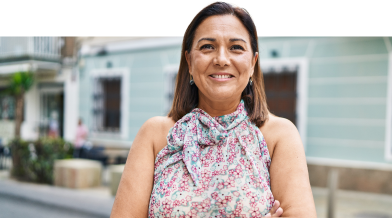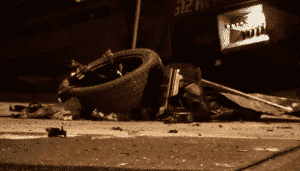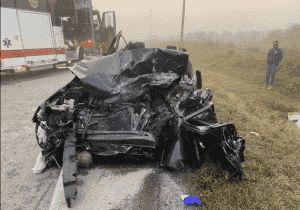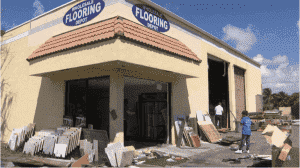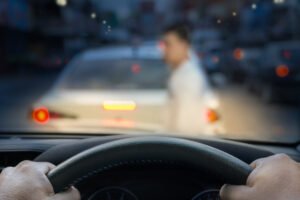
When you’re involved in a hit-and-run Miami car accident, gathering evidence is important to prove fault and secure fair compensation. You’re likely shaken, but it’s important to act quickly to document the scene.
Our Miami car accident lawyer recommends taking control of your case by collecting as much information as possible, as this will help Anidjar & Levine build a strong foundation for your claim. Read on to learn more about how to prove fault in a hit-and-run Miami car accident.
Gathering Evidence at the Miami Crash Scene
As you stand at the scene of the hit-and-run accident, it is important to gather as much evidence as possible to support your claim. Conduct a thorough scene assessment to identify and document significant details.
Take clear, high-quality photographs of the accident site, including any damage to your vehicle, surrounding structures, and any visible injuries. Make note of the time of day, weather conditions, and any potential surveillance cameras in the area.
Evidence preservation is fundamental; avoid disturbing or contaminating any evidence, such as tire marks or debris, that may be important to your case. Additionally, try to capture the license plate number or description of the fleeing vehicle, as well as the direction it was heading.
Identifying Witnesses and Obtaining Statements
As you investigate the hit-and-run accident, it’s important to identify witnesses who can provide information about the incident. Here’s what to know when you are proving fault in a hit-and-run Miami car accident:
Witness Statements Matter
Identifying witnesses and obtaining their statements is an important step in building a strong case for a hit-and-run car accident. You’ll want to gather witness statements as soon as possible after the accident, as memories can fade over time.
It’s important to assess witness credibility, taking into account factors like their proximity to the accident, visibility, and potential biases. Make sure that witness statements are detailed, accurate, and reliable.
You should also ask witnesses to provide a written statement, which can later be used as evidence. When evaluating witness statements, look for consistency and corroborating details that can help establish fault in the hit-and-run accident.
Surveillance Video Review
Security cameras installed at nearby businesses, traffic intersections, or residential areas can be a treasure trove of evidence in a hit-and-run car accident. You may be able to obtain footage that captures the accident, providing valuable visual evidence to support your claim.
When reviewing surveillance footage, it’s important to take into account the surveillance limitations, such as the camera’s angle, resolution, and field of view. Video quality can also impact the usability of the footage, so it’s important to evaluate the clarity and stability of the recording.
Track Down the Fleeing Driver When Proving Fault in a Miami Hit-and-Run Car Accident
When a hit-and-run accident occurs, you’ll want to act quickly to gather as much information as possible to aid law enforcement in tracking down the fleeing driver. This includes providing detailed descriptions of the vehicle, including its make, model, color, and license plate number, if possible.
It’s important to file a police report as soon as possible, which will help create an official record of the incident. Be prepared to provide any available evidence, including witness statements, photographs, or video footage.
Law enforcement will use this information to create a suspect identification profile, which will aid in their investigation. By working closely with the authorities, you can increase the chances of identifying and apprehending the fleeing driver, ultimately helping to prove fault in your hit-and-run accident case.
Reviewing Traffic Camera Footage and Other Surveillance
When reviewing traffic camera footage and other surveillance, you’ll want to carefully examine the camera angles to guarantee they capture the incident from a relevant perspective.
Camera Angles Matter
In the pursuit of identifying the responsible party in a hit-and-run accident, reviewing traffic camera footage and other surveillance becomes an integral step. You’ll want to carefully examine the camera angles, as they can greatly influence the quality of the evidence. Here’s what to know:
- Camera placement can affect the visibility of the accident scene, with corner-mounted cameras providing a wider view than those mounted above intersections.
- Angle importance is key, as a camera positioned directly above the accident may not capture the license plate or facial features of the responsible driver.
- Cameras with a wider-angle lens can capture more of the surrounding area, but may not provide the level of detail needed to identify the vehicle or driver.
- Adjusting the camera’s zoom and focus can also enhance or hinder the footage’s usefulness in identifying the at-fault party.
Private Property Cameras
Private property cameras can provide valuable footage in hit-and-run cases, especially when traffic cameras are unavailable or don’t capture the incident.
These cameras can be found at businesses, apartment developments, and residential areas, and may have captured the accident or the fleeing vehicle. You can request access to this footage, which can serve as significant video evidence in your case. Here’s what to consider:
- Look for cameras at nearby gas stations, convenience stores, or restaurants that may have captured the incident.
- Check with local business owners or property managers to request access to their footage.
- Be prepared to provide a detailed description of the incident, including the date, time, and location.
- Confirm that you obtain a clear copy of the footage, as it may be vital in identifying the at-fault driver.
Documenting Injuries and Damages in a Miami Crash
While pursuing a claim for a hit-and-run accident, you’ll need to document injuries and damages to build a strong case. This involves documenting medical treatment, including doctors’ appointments, hospital stays, and therapy sessions.
Keep a detailed record of your medical expenses, including bills, invoices, and receipts. Additionally, gather receipts for any out-of-pocket expenses related to the accident, such as car repairs, rental cars, and transportation costs.
Also, keep a journal to track your daily pain levels, medication, and any limitations on your daily activities. This documentation will help establish the severity of your injuries and the extent of your damages, ultimately supporting your claim for compensation. We are ready to help you prove fault in a hit-and-run Miami car accident.
Learn More About How To Prove Fault in a Hit-and-Run Miami Car Accident
By following these steps, you’ll be well-equipped to prove fault in a hit-and-run Miami car accident. With the help of Anidjar & Levine, we will analyze the evidence and establish liability, increasing your chances of securing fair compensation for your losses.
Contact us today for a free consultation.




